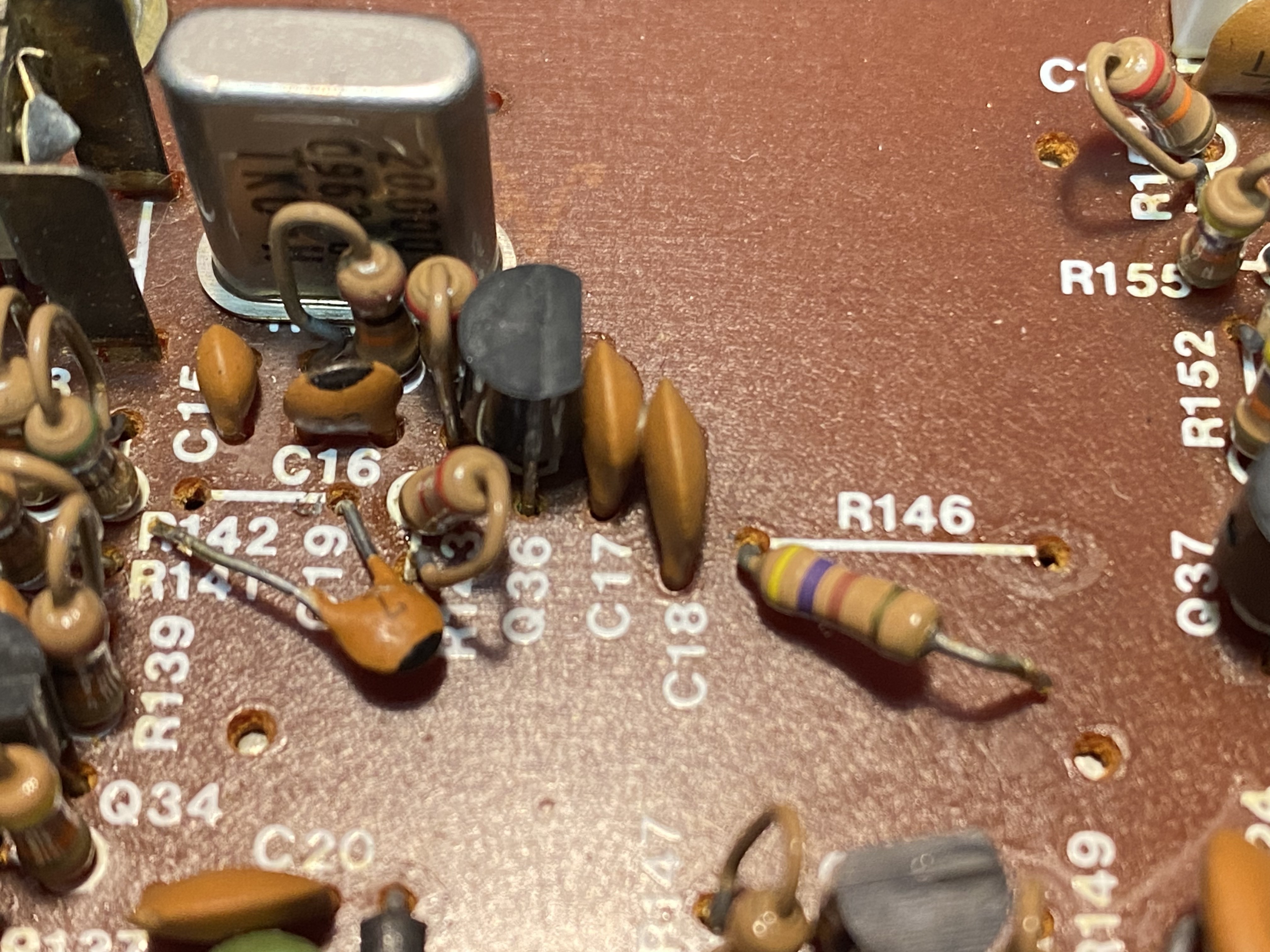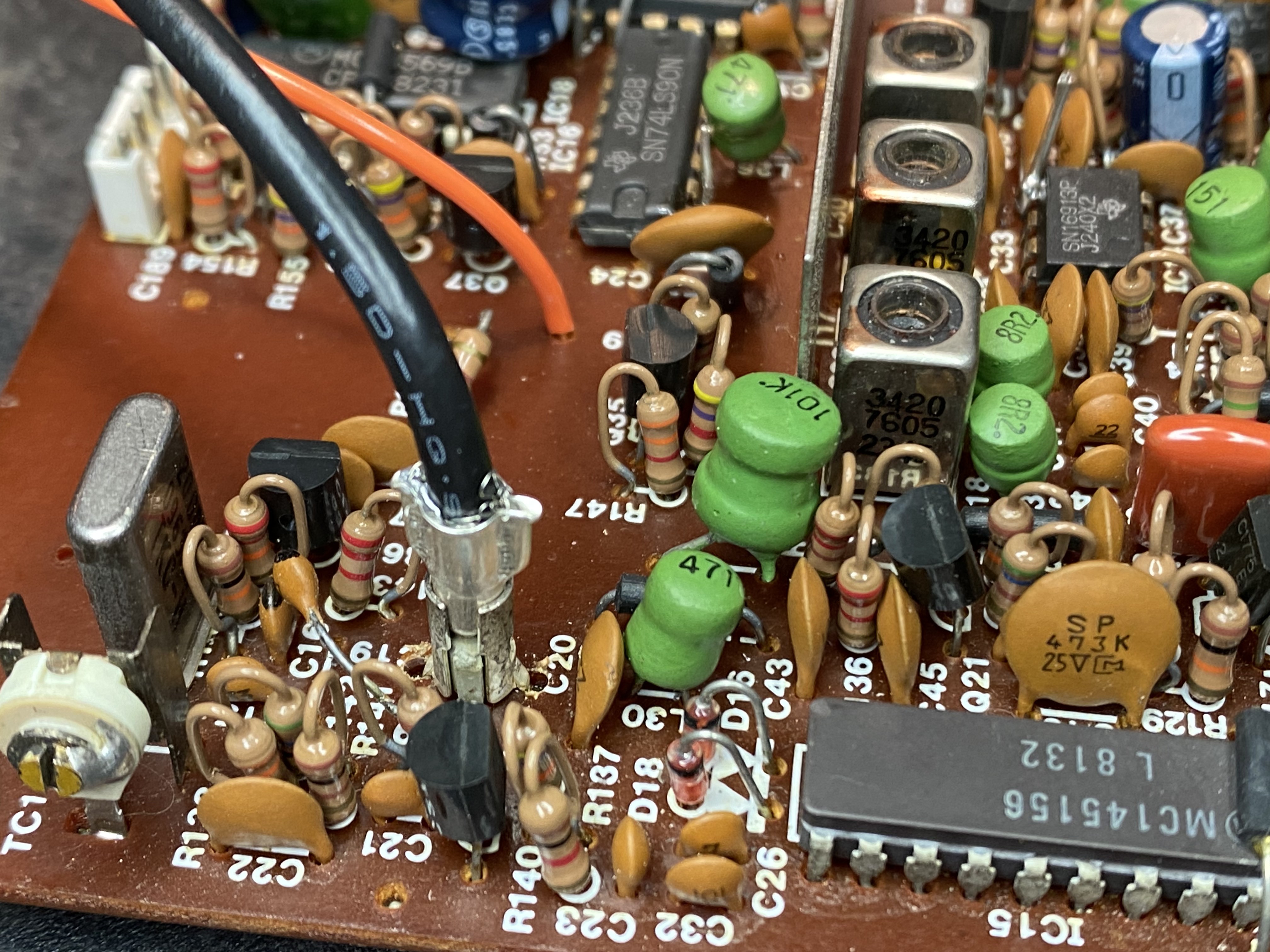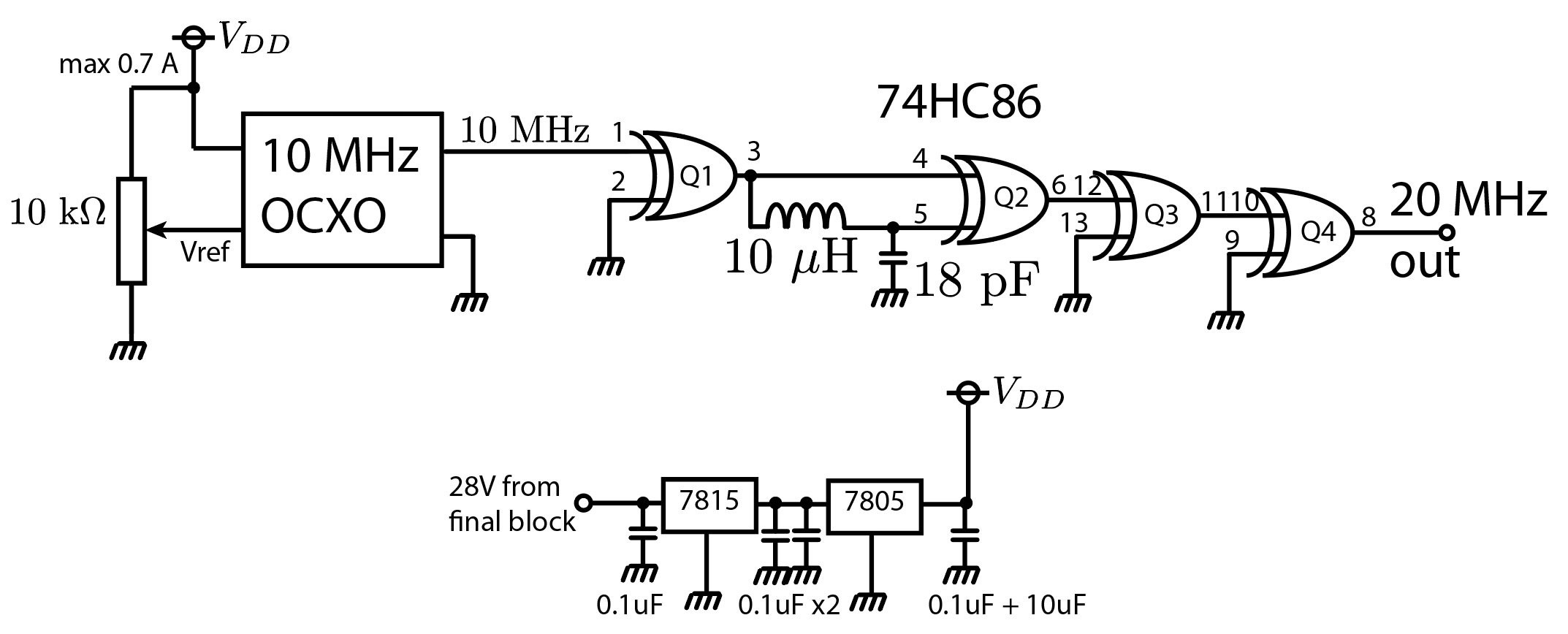
Above is the whole schematic. The key is the frequency doubler by Q2. Q1, Q3, Q4 are just buffer made of vacant pins of 74HC86.You may not believe this simple circuit produce 20MHz signal? Here is the proof!
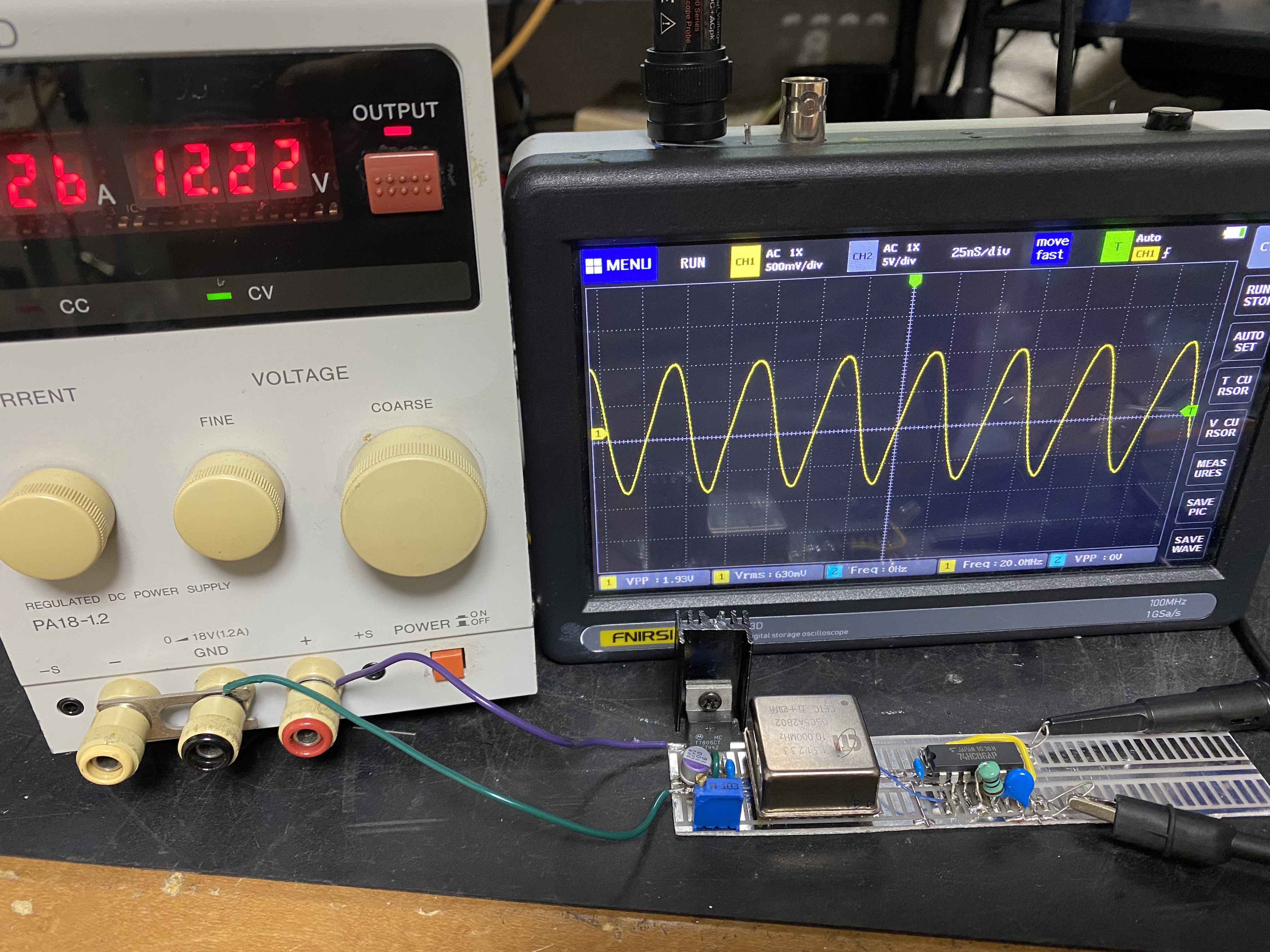
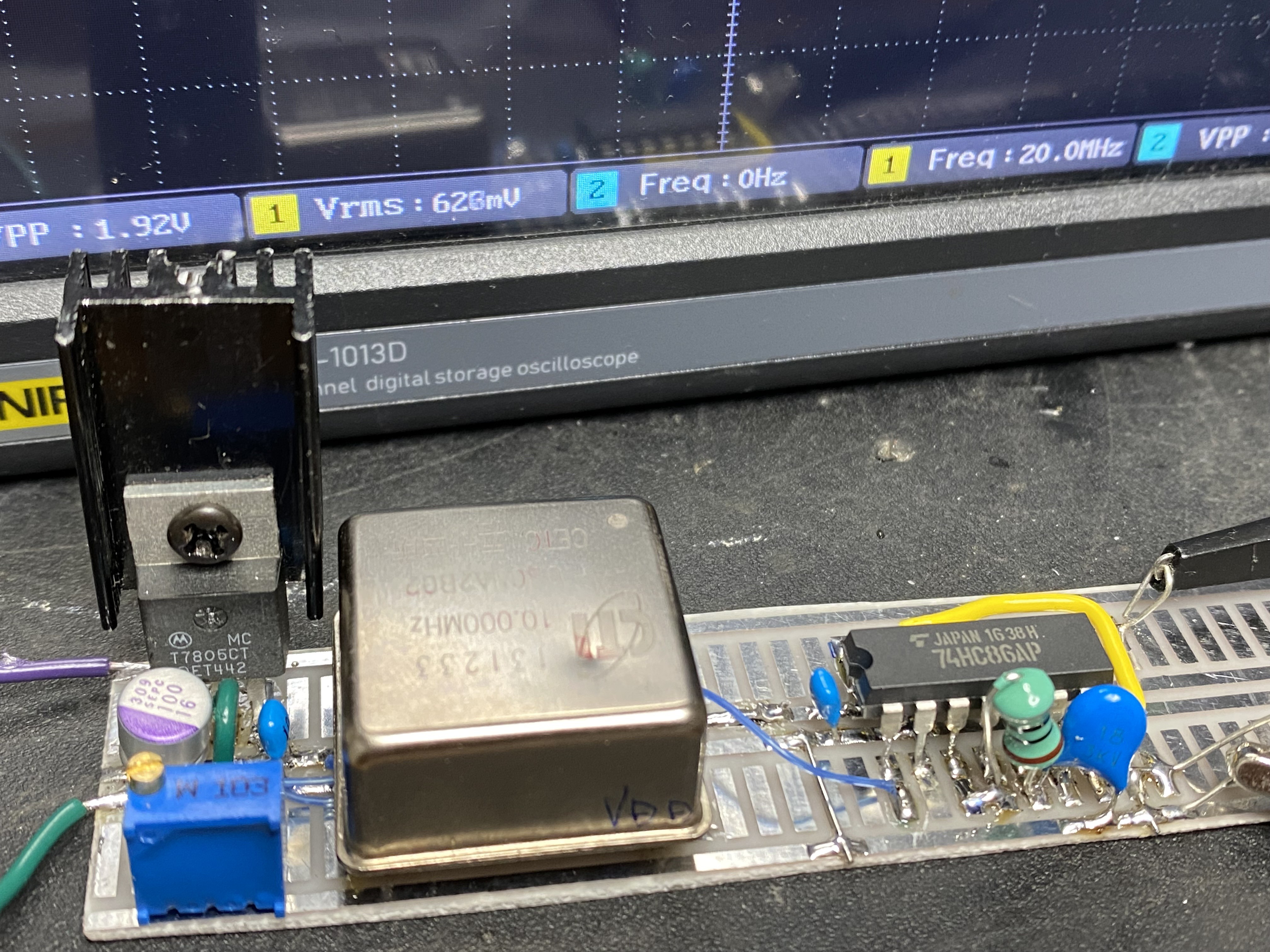
The frequency calibration can be done just by 10k trimmer.
The maximum current draw of OCXO is 0.7A and I could not find good place to get 12V (or less) where has enough capacity for supporting this draw, so the voltage source is obtained from final block, where 28V/20A capacity. The 5V is generated through two-stage voltage regulator. Single stage regulator excesses the maximum rating of 78xx series heat dissipation and the two stage can divided heat generation in two parts.
The 20 MHz out can simply connect with “SO-1 terminal” of TS-930. The actual implementation is just shown below…
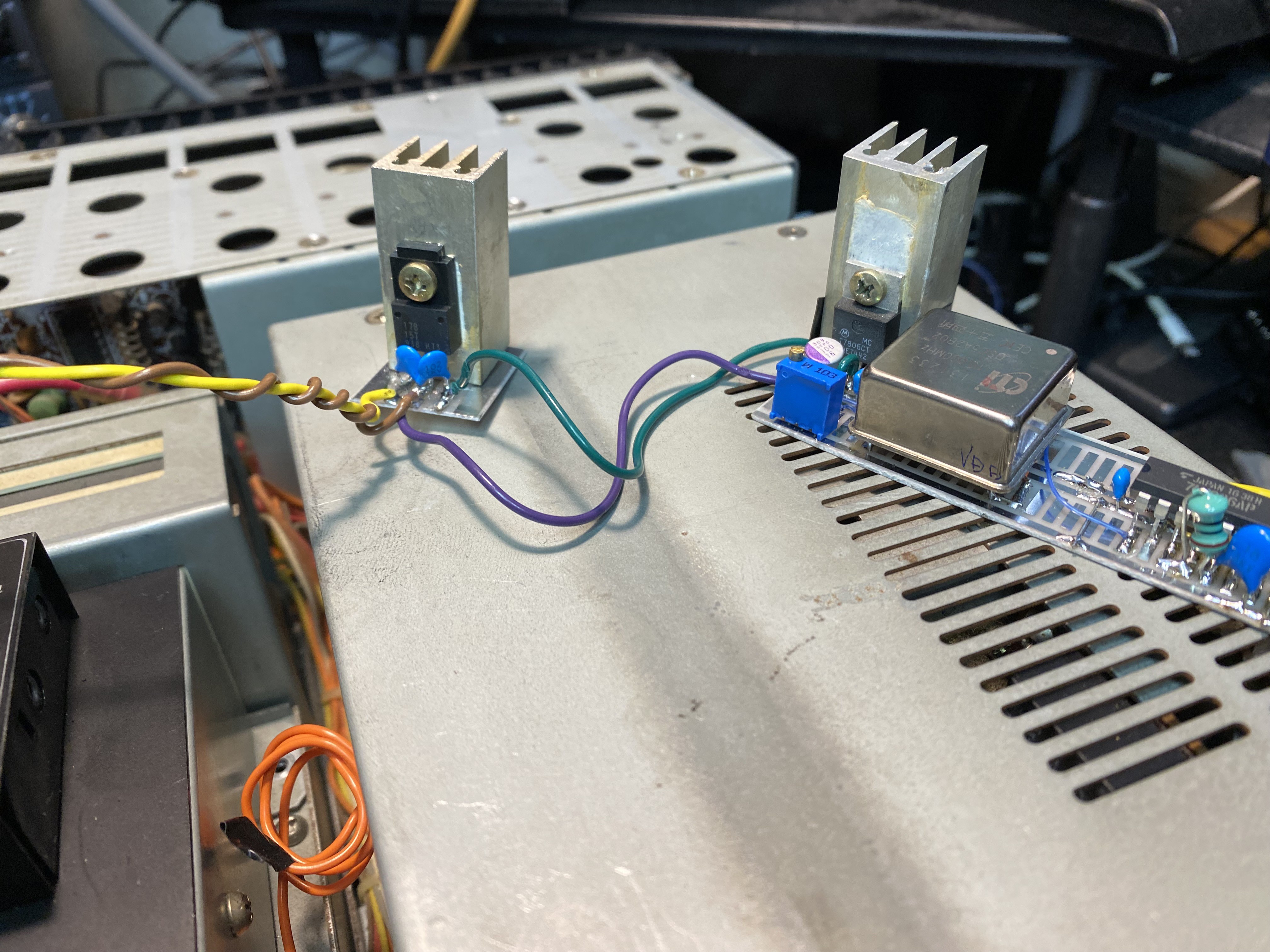
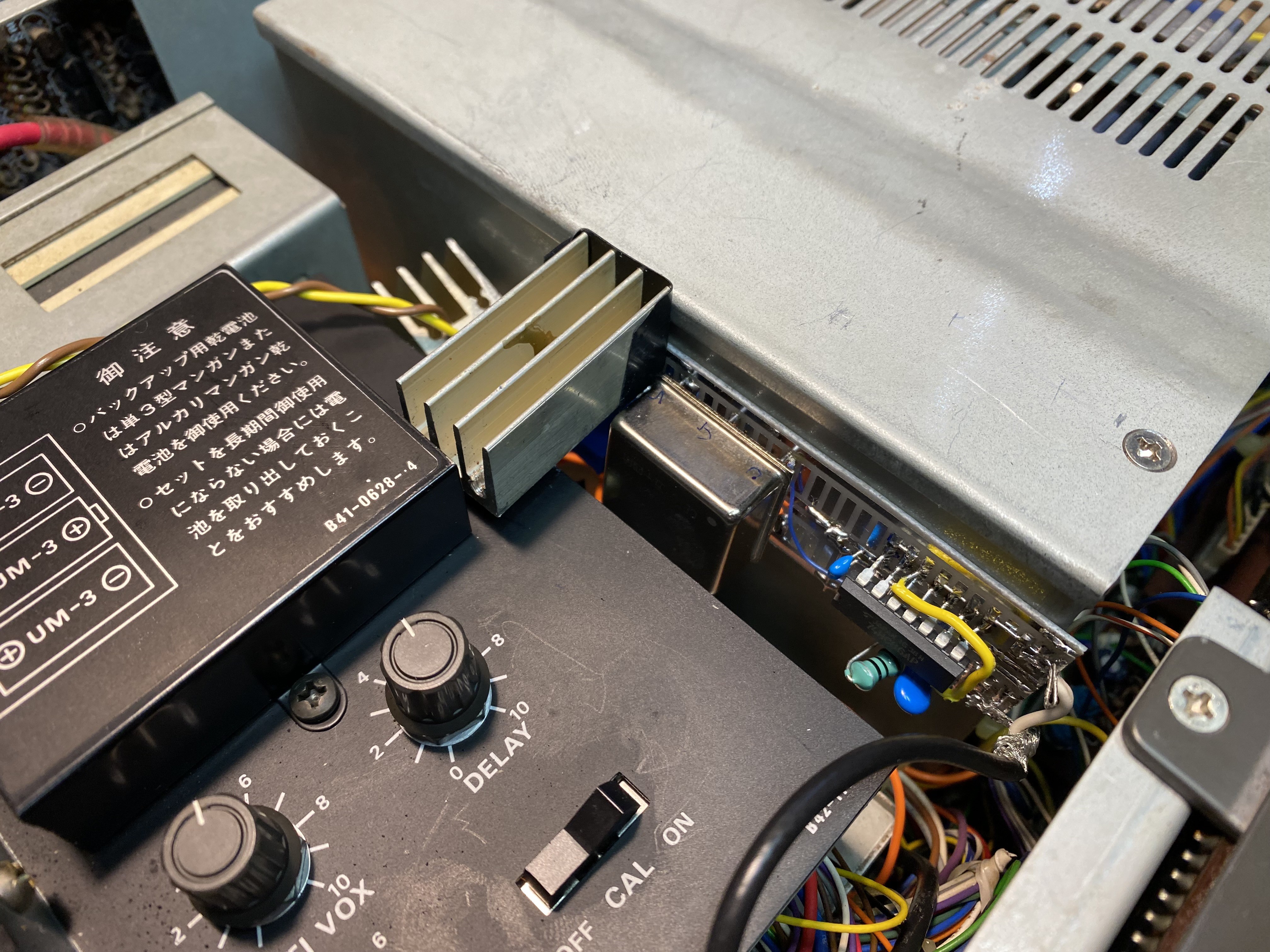
The TS-930 does not have much room to put any items, so the whole unit is inserted just besides antenna tuner opening.
Please note that the OCXO requires, at least, two minutes to stabilize. But a few minutes later from cold-start, your TS-930 will get super high precision frequency standard!
and it works,,!
 kodera2t
kodera2t